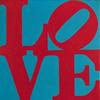Exhibition on Indigo and the Slave Trade by Artist Gerardo Castro to Open at Rockland Center for the Arts
- WEST NYACK, New York
- /
- October 13, 2020
Fire & Indigo, Gerardo Castro, is on view at Rockland Center for the Arts, Oct. 17 – Nov. 21 in Gallery One, West Nyack, New York. (Visitors must call to schedule an appointment and follow social distancing protocols, masks required.)
In his Fire & Indigo series, Puerto Rican born Gerardo Castro tells stories through burnings on paper. Castro’s art work is drenched with powerful narratives - supernatural forces influenced by Afro-Cuban religions and spirituality with work that enables a connection to history and a courageous confrontation of meaning and myth, ethnicity and gender. His series Fire & Indigo connects the spiritual practices of using fire as the element that initiates the mark on paper with the social, political and cultural implications and indigo harvesting which manifested during the slave trade, American Revolution and colonization.
The burnings emanate what the artist sees as the most seductive and important color regarding his history and spirituality: Indigo. Indigo is associated in many cultures with magical and spiritual rituals. This is probably due to the processes of change it goes through which looks dull green in a vat, emerging into the air-transformed to a vivid blue. Enslaved Africans carried the knowledge of indigo cultivation to the United States, and in the 1700s, the profits from indigo outpaced those of sugar and cotton. Castro presents the viewer with a color so rich that they are entranced by “burnings” and examine all that lies within a color’s substance. Powerful and dignified, indigo conveys integrity and deep sincerity.
Regarding artistic process Castro uses a steel cut-out silhouette of his body in which he uses fire to heat the steel and then burns the paper with the heated steel - resulting in a burned image. What is created is the building up and layering of images in which the ritual of fire is a powerfully symbolic gesture referencing the body’s magical transformation; his figure re-invented or reclaimed from a point of reincarnation that reaches back to a time in history. These pieces are inspired by supernatural forces - the unseen “Seen”- influenced by Castro’s knowledge of indigenous cultures and Afro-Cuban/Caribbean religions and spirituality. The transformation on paper transcends process even further with the application of Indigo, a mystical color running through the work that ties it all together. The artist lays thin washes of indigo dye and indigo oil paint over the figures. Indigo is associated in many cultures with magical and spiritual rituals - symbolic of inner mind, the intuition and the vast consciousness.
Castro states, “Through simple forms and a straightforward presentation I strive to present the viewer with powerful and dignified images layered with a color so rich that they see beyond the surface and examine all that lies within a color’s substance. As an artist, my work has to have something to say - there’s a history, there’s a story, there’s a relevance, there’s a sense of place. A connection to your roots is really one of the most important things of all.”
Gerardo Castro earned his MFA from Pratt Institute, Brooklyn, NY in 1997. His work has been exhibited nationally and internationally, including Cuba, Puerto Rico, Dominican Republic, Budapest and major US Cities. Castro has exhibited in the following selected art shows, galleries and museums. Jadite Gallery, NY; Toxic Landscapes, Biblioteca Nacional, Havana Cuba; Wilmer Jennings Gallery, New York, NY; Body, Bodies, Bodies SOMArts Cultural Center, San Francisco, CA; The Human Rights Institute, Kean University, NJ; Joyce Gordan Gallery, Oakland CA; Aphrodisiac Agua, Santo Domingo, Dominican Republic; In Search of Queer Gods, Root Division, San Francisco, CA; Past, Present, Pa’Lante, Museum of the History of Ponce in Puerto Rico; Social Justice: It Happens to One, It Happens to All, St. Mary's College Museum of Art, Morago, CA; Contemporary Directions: Niger to Afrofuturism, Westfield State University, Westfield, MA; The World After January 20, 2017, Vassar College, Poughkeepsie, NY; Two Spirits, Gallery Aferro, Newark, NJ; Light vs Dark, Gallery 263, Cambridge, MA; Water, Air, Earth, Fire, Dual Art Gallery, Budapest, Hungary; The Studio Door, San Diego CA. He works out of his studio in Newburgh, NY.
Free to the general public, the gallery is open by appointment only. There will be a limit on visitors in the space at all times, in alignment with current social distancing protocols. Visitors are required to wear masks upon entering RoCA and while in the gallery. To schedule a visit or for more information contact: Rockland Center for the Arts, 845-358-0877, info@rocklandartcenter.org. Rockland Center for the Arts is located at 27 S Greenbush Rd., West Nyack, NY 10994. Gallery hours are: Mon.-Fri. 10-4; Sat. 1-4pm.



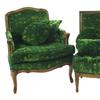


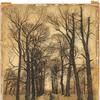

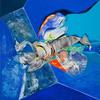
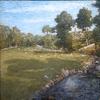
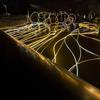
![Peter Paul Rubens (Flemish, 1577–1640), After Titian (Tiziano Vecelli) (Italian [Venetian], c. 1488–1576), Rape of Europa, 1628–29. Oil on canvas, 71 7/8 x 79 3/8 in. Peter Paul Rubens (Flemish, 1577–1640), After Titian (Tiziano Vecelli) (Italian [Venetian], c. 1488–1576), Rape of Europa, 1628–29. Oil on canvas, 71 7/8 x 79 3/8 in.](/images/c/e2/2e/Jan20_Rape_of_Europa100x100_c.jpg)


![Offering a Truce [Bested], 1895, is estimated to sell for between $1,300,000 and $1,800,000 on March 22, 2014, for The Russell: An Exhibition and Sale to Benefit the C.M. Russell Museum. Offering a Truce [Bested], 1895, is estimated to sell for between $1,300,000 and $1,800,000 on March 22, 2014, for The Russell: An Exhibition and Sale to Benefit the C.M. Russell Museum.](/images/c/a8/20/Dec10_Offering_a_Truce__Bested_300dpi100x100_c.jpg)
